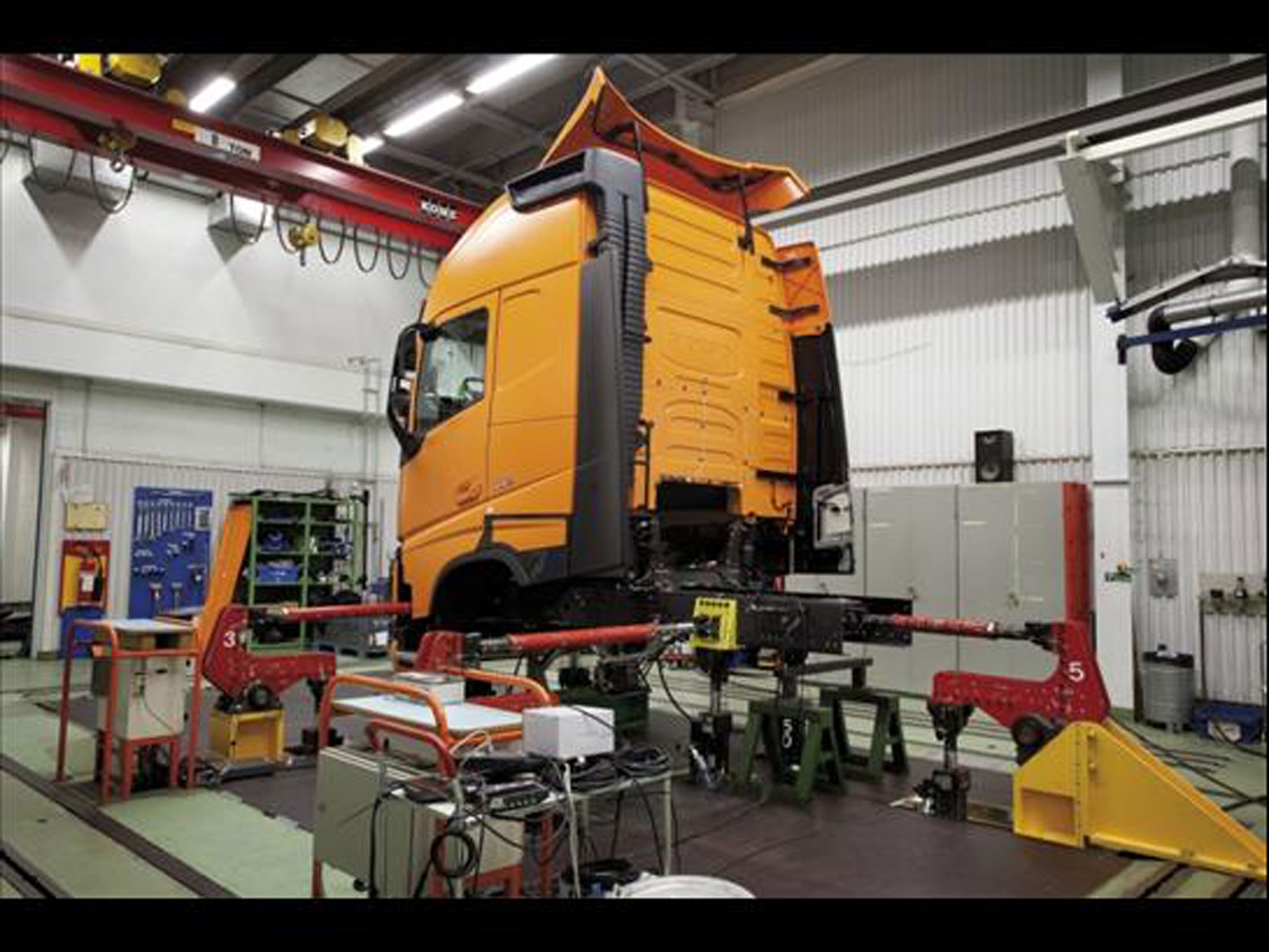The new generation of Volvo FH trucks has a new set of technical components and solutions, so it has had to overcome very demanding quality tests, based on the future needs of drivers.
Developing a generation of trucks , in which all technical components and solutions are new, involved a high level of demand in quality tests. Many of the tests to which the new Volvo FH have focused on the needs of the client.
"You have to offer the maximum activity time. Customers need to know that trucks will do their job as expected, regardless of weather conditions or operational environments," explains Kenneth Abrahamson, director of the Verification and Validation Project Director of the new Volvo FH . "It took more than a year only to determine the verification and validation plan that defined the different characteristics of the truck that had to be tested," explains Kenneth Abrahamson, director of the Verification and Validation Project of the new Volvo FH .
"Although the verification and test plan is very sophisticated, the method is very simple to understand. It is about trying, measuring and improving, and repeating the test process again and again until the product meets or exceeds the requirements. All errors reports were monitored and corrective measures were adopted," Kenneth Abrahamson continues.
The tests that were performed focus on aspects such as reliability, durability and truck fuel consumption. At first, individual components such as chassis, cabin and electrical system were tested separately. Once all the tests passed, it was time to test the full truck. The tests were carried out in the Volvo Trucks laboratories and in the company's test tracks, and also in open traffic, with test trucks.
One of the many test land used by Volvo Trucks to test its trucks is located in Kiruna, north of Sweden. During the winter of 2011/2012, the lowest temperature that was recorded there was -44 ° C and this icy climate was perfect to determine how the new Volvo FH in these extreme conditions. Hans Johanzon was one of the test engineers and made sure that all drivers knew what was expected of them.
"These tests are related to customer work. That is, test drivers use these vehicles exactly in the same way they use their own trucks. They drive them, sometimes they carry passengers, sleep in them and prove that they start in the morning, even after a ice cream night," he says.
During the trial period, each truck was conducted at least 20,000 kilometers in cold cold conditions, in which one of the biggest problems is that all the components of the truck, from the hardest material to the electrical system, are hired and become brittle. The challenge was to develop components that supported these icy conditions without failing.
"Make sure that the truck can withstand not only an extremely cold climate, but also rapid temperature changes is another quality challenge. Therefore, we normally drive from northern Scandinavia, where 40 degrees below zero can be recorded, to the Norwegian coast, where the weather is softer and more humid and the temperature often records positive values. Twenty minutes later, we return to driving to the mountains, where the temperature descends again. Hans Johanzon explains.
In the Hällered test field, near Gothenburg, in Sweden, other tests of different types were performed. A large number of test drivers worked intensively to carry out a very demanding accelerated resistance test series. These tests are the equivalent of 10 years and 1,250,000 km on the road. It includes challenging conditions on the road, such as driving on slopes between 10 and 20 percent and driving on a series of difficult obstacles, such as potholes, irregular land, cobbled land, slopes and water channels. Testing procedures include other elements such as opening and closing the doors over and over again.
One of the most demanding parts of accelerated resistance tests is to drive the truck on a durability track. In it, the truck is subjected to the same type of obstacles that are in normal traffic conditions, but in a much shorter period of time. When repeatedly driving along the track, which raises a wide range of challenging obstacles, the test is largely accelerated.
An even more accelerated test was carried out in the Volvo Trucks laboratory, which includes a vibratory mechanism, and in which the truck undergoes vibrations uninterruptedly for between six and eight weeks. For the client, this is equivalent to driving more than one million kilometers.
Subsequently, a monitoring of all the information and comments of the verification tests are monitored to understand the cause of any failure and to find lasting technical solutions.
Next, the new solutions are submitted to a new test and the procedure continues thus until the specification of the component in question meets the requirements specified for said component.
To also validate the product from the perspective of the final customer, Volvo Trucks also performed field tests. "This implies trying the new Volvo FH in filmed traffic. We have almost 50 trucks driven by customers in Europe, Australia and Brazil. In this way, we can cover operational conditions, types of transport, climatic conditions and behaviors of diverse drivers," explains Kenneth Abrahamson.























































